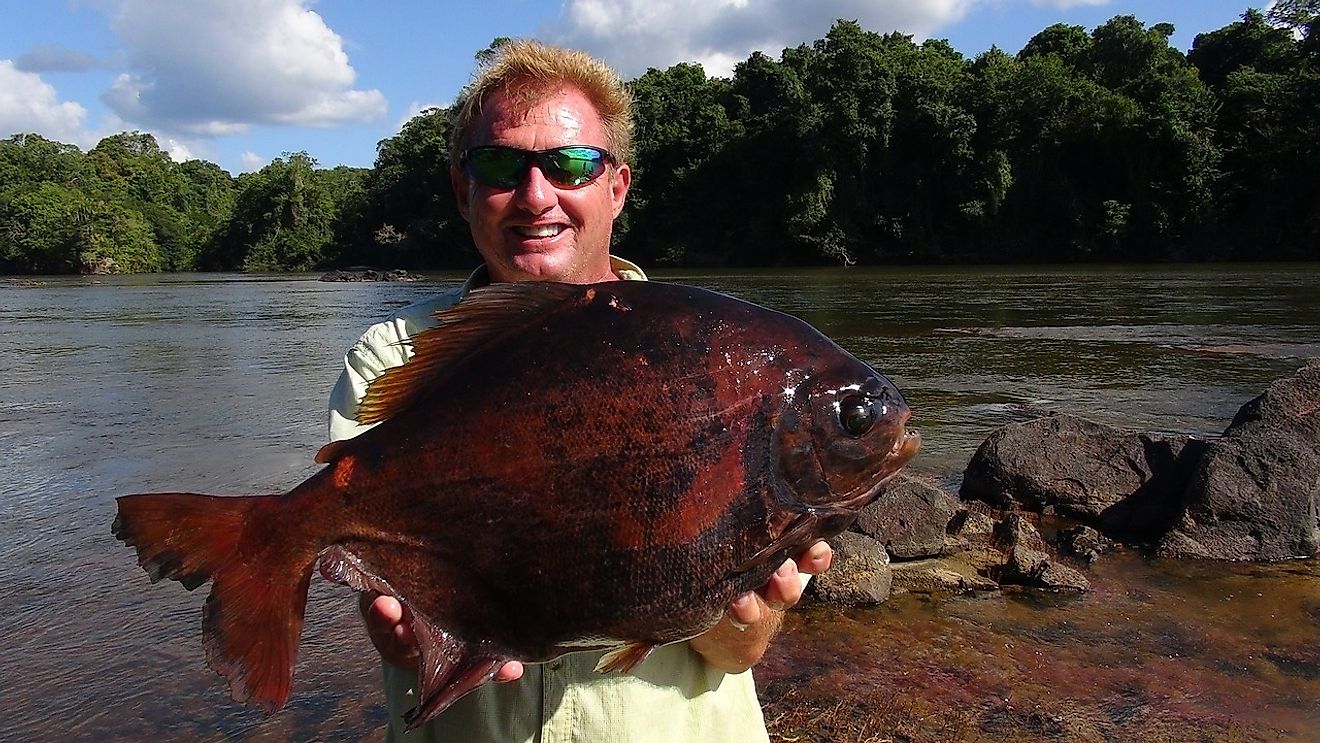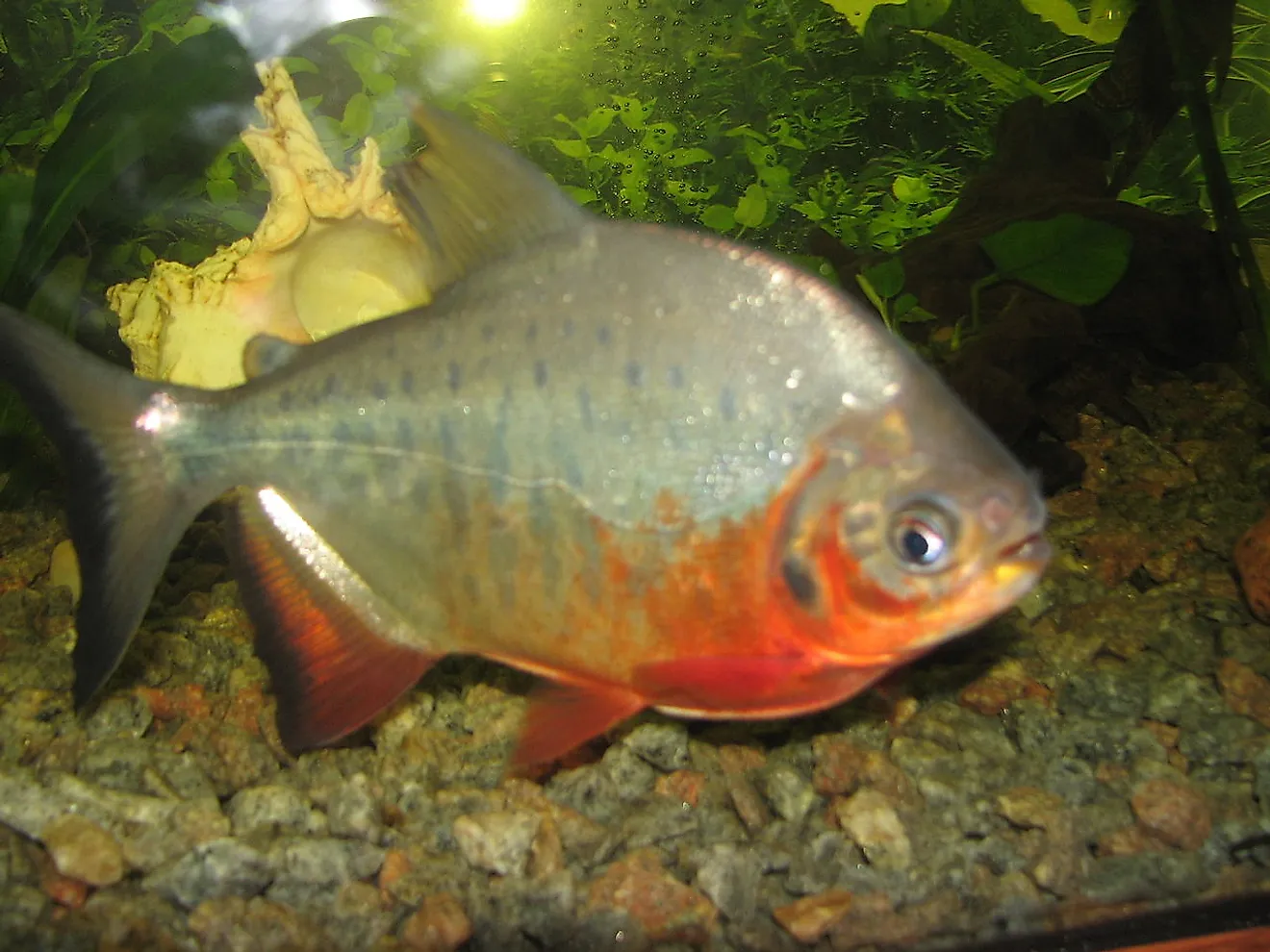There's A Fish With Human Teeth: 5 Facts About The Pacu

- Pacus taste like tilapia.
- The pacu is native to South America.
- This fish has big teeth so that it can grind seeds found in the fruit it eats.
Have you ever been swimming in a freshwater lake and had a large, angry-looking fish with teeth the size of your own nipping at your toes? No? Most people have not, but if you have, it could be that you had encountered a sweet-tasting pacu.
You will not often find the pacu living wild in North America as this fish with enormous, human-like teeth normally sticks to fresh water homes in the southern hemisphere. Lately, however, it has been known to travel. It has not done so on its own, but humans have brought this fish from its native habitat to make some surprise appearances in various places around the globe.
The pacu may look scary but the good news is that, even if it is related to the piranha, it is actually quite innocent.
Here are 5 things you may wish to know about it.
5. Pacus are native to South America
The pacu finds its native habitat in freshwater areas in tropical and subtropical spaces in South America. Many species of fish fall under the pacu name, and each has its own preference for a home. Just like humans, they have their differences. Some pacus live in rivers and lakes, while others inhabit flooded forests and floodplains. All types of pacus live in freshwater.
In their natural habitat, pacus are found specifically in the Orinoco River, the Amazon, the Guianas, Rio de la Plata Basins and São Francisco River.
The name “Pacu” comes from an indigenous Brazilian word meaning “quick eater”, and it is applied to various species of serrasalmid fish in South America.
4. Piranhas are their relatives
Do you have an intimidating cousin living up the street? The pacu does as well. It is related to the piranha, which also lives naturally in freshwater areas in South America. Both are part of the serrasalmid subfamily of fish, but they are not entirely the same.
Piranhas eat both meat and plant material, with a hearty omnivorous diet that can consist of other fish, crustaceans, insects, worms and vegetation.
In contrast, the pacu eats mostly vegetarian fare. It has been known to consume other fish at times if there isn’t enough else around to eat, but normally this aquatic species survives on fruits, vegetables and seeds. In fact, the pacu’s teeth are so large in part because, at times, it needs to crunch seeds found in fruit that falls into the water it inhabits.
Other differences between the piranha and the pacu include the fact that piranhas have sharp teeth and live in groups, whereas the pacu has large but blunt teeth and prefers a solo life.
3. Pacus are famous for biting men’s testicles
Strange but true, back in 2013, male swimmers enjoying a dip in the waters off the coasts of Denmark and Sweden were warned about the presence of pacu fish. The fish is not normally found in freshwater that far north, but somehow one was caught in the net of a Danish fisherman working in this area.
At the time, experts suggested that someone may have dumped their pet from an aquarium into the waters, and this is how the fish got there. After it was found, a local professor joked that men swimming in the area might wish to keep their shorts tied on tightly, to prevent a pacu from trying to nibble at their testicles.
Would this really happen? Perhaps it is possible but it was found out later to be a joke. (The pacu is, after all, mostly vegetarian).
2. In some places, they are invasive species
Pacus are native to South America but they are also sold as pets to have at home. Many people around the globe have them in aquariums. The trouble is, the fish are sometimes sold when they are quite small, and pet store workers do not always tell the new owners that the pacu can grow to be rather large. Consequently, once the fish starts growing, (and keeps on going), some owners become overwhelmed by its needs and size.
These fish are then abandoned in natural waterways, where they can take over. The fish can become invasive species when they out-compete the waterways’ native species for food, and introduce diseases and parasites.
1. People eat pacus, and they taste like tilapia

You can actually eat a pacu. These fish are said to taste like tilapia, which you may have seen swimming around in a tank at your local grocery store. Unfortunately, however, the pacu is being overfished in the Amazon as it is a popular staple in South American markets and is also successfully exported.
People interested in farming fish-the practice of raising fish commercially either in tanks or in enclosed ponds to sell as food- are now turning to pacus as a product, which could help this fish survive over the long term. Pacus are said to be ideal for raising as they can easily live in low-oxygen water, and they don’t eat much protein which makes them cost-effective to raise.











